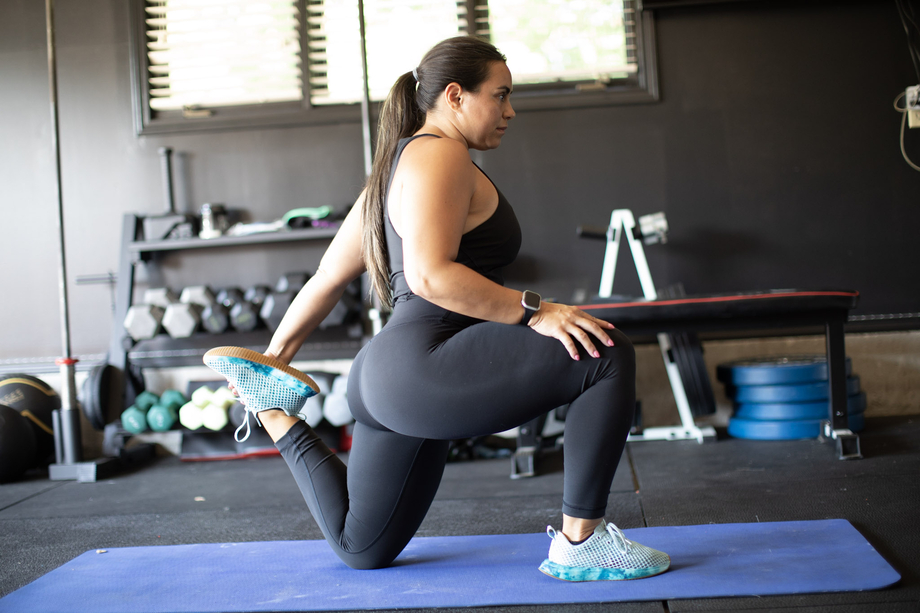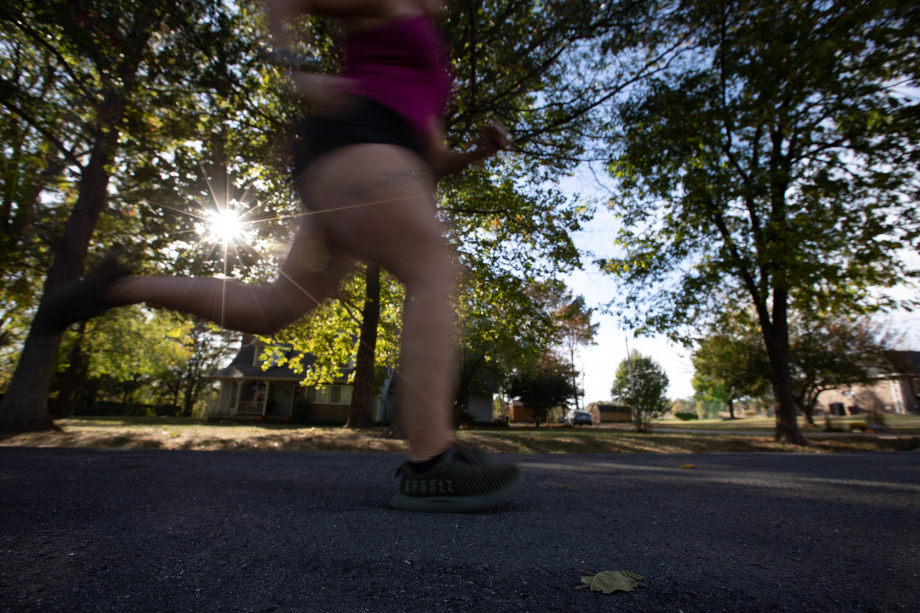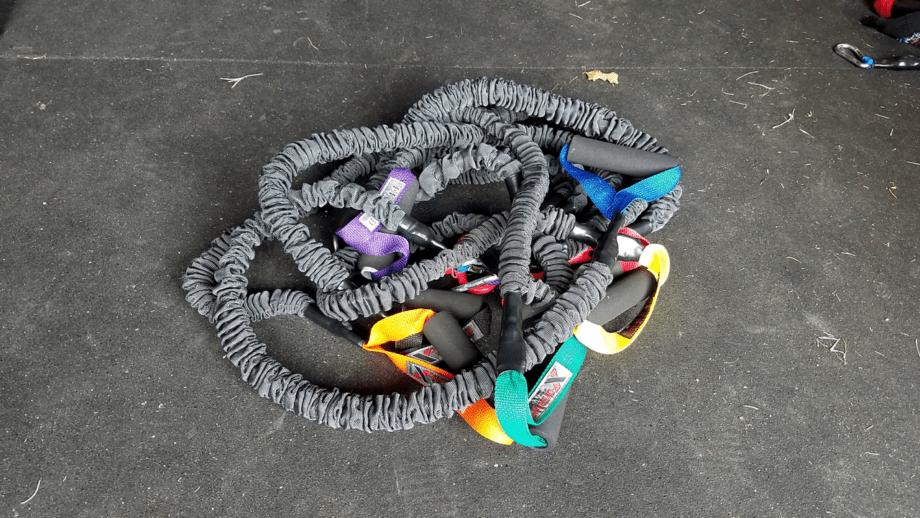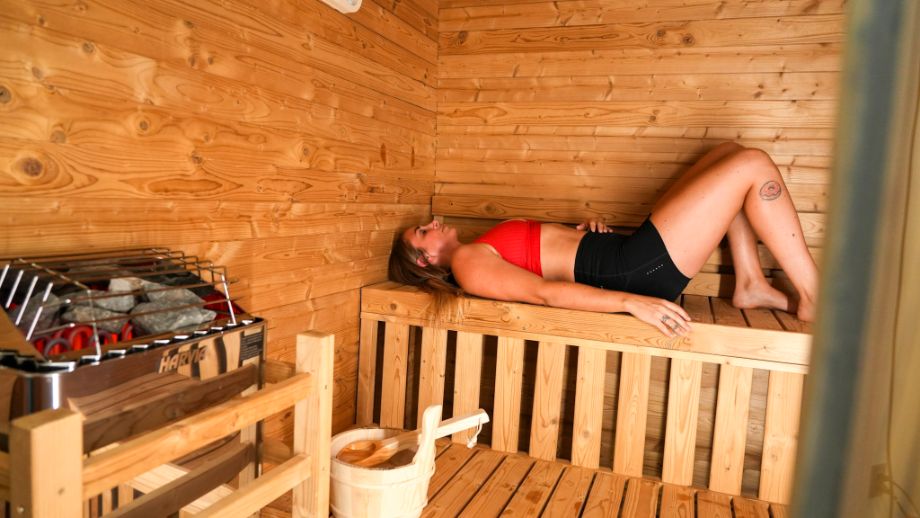Most people make a point to include some light stretching during their warmup, but few set aside the time after their run to get in a post-run stretch session. After a run, your muscles are already nice and warm, so it’s a great time to get your stretch on. Post-run stretches help your body recover from the demands of your cardio session and keep your body ready for whatever comes next.
Whether running outside or on a treadmill, a post-run stretching routine can help improve flexibility, comfort, range of motion, and even your running performance. This article will look at the science behind stretching and six of the best stretches for post-run recovery.
Why Stretch After Running?
When it comes to running tips, stretching is pretty high up on the list. We’ve all heard about the importance of stretching after a workout, but how many of us make it a priority once we cross the theoretical finish line of our training run? A post-run stretch can be an excellent part of an effective cooldown. It’s an efficient way to care for your muscles while bringing your heart rate down and slowly letting your body return to a resting state.
Although research on post-workout stretching is inconclusive, you probably know anecdotally that elongating your muscles through static stretching after a run can improve blood flow, relieve soreness, and help prevent running injuries.
When you hop off the treadmill or come in from a run outside, spending a few minutes stretching your major muscle groups can help your body recover and prepare for its next workout.
6 Post-Run Stretches to Try
Here are six of the best ways to stretch your muscles after a run, complete with step-by-step how-to instructions.
1. Calf Stretch
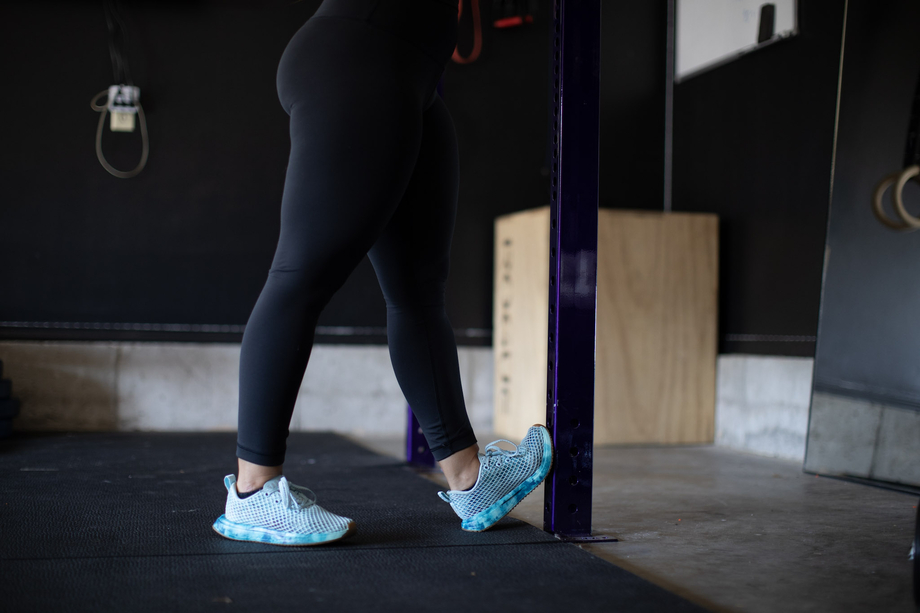
How to do it:
- Stand facing a wall or upright to your squat rack.
- Plant one foot firmly into the ground and place the ball of your other foot on the wall or upright. Just your heel on the front foot should be touching the ground.
- With a very slight bend in your knee, press your body weight forward to stretch the calf and Achilles tendon of your front foot.
- Hold for 15 to 30 seconds, release, and repeat on the other side.
Why this stretch is awesome:
Your calf muscles help you perform endless amounts of everyday movements, including running (like the rockstar athlete that you are). This is because they’re responsible for plantarflexion, the movement that allows you to point your toes, press down on the gas pedal of your vehicle, and push your body forward with every running stride. Stretching your calf muscles can help keep them healthy and ready for action, and can even help to prevent shin splints.
2. Quad Stretch
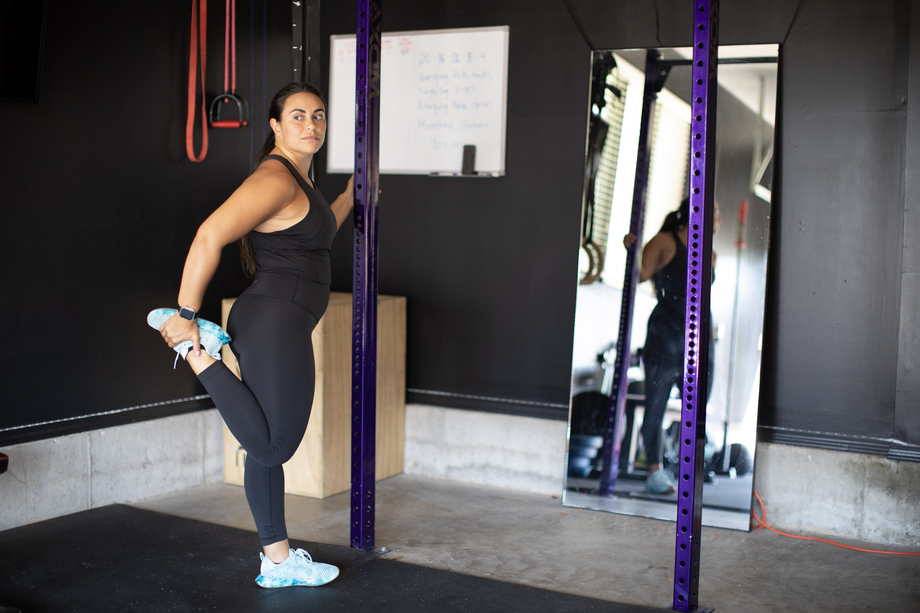
How to do it:
- Stand straight (no leaning forward!) with your feet planted hip-width apart.
- Pull your left foot up behind you, and grab it with your left hand.
- Gently pull your foot to your glutes, keeping your anchor leg straight and your knees close together.
- Hold the stretch for 15 to 30 seconds. Release and repeat.
- Switch legs to stretch the quadricep muscles on the other side.
Why this stretch is awesome:
Your quadriceps are used every time you straighten or extend your knees. Think about how often that occurs when covering some serious mileage on a run. We use our quadricep muscles for almost all of our day-to-day movements. We wouldn’t be able to stand without them, let alone run. Making an effort to regularly stretch your quads helps keep them strong and ready for their next demand.
3. Groin Stretch
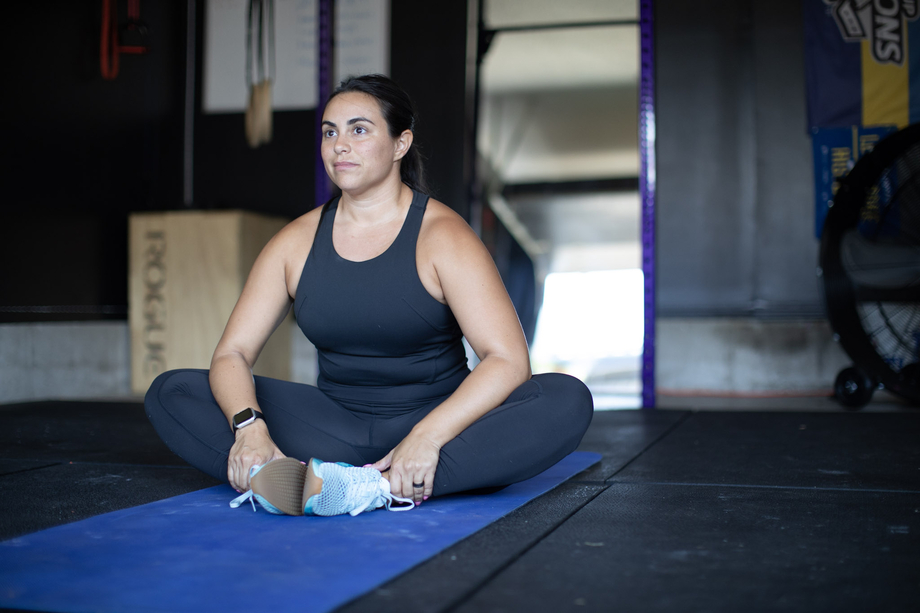
How to do it:
- Sit on the ground with the bottoms of your feet touching and your knees pointed outward.
- Keep your torso upright. This may be enough of a stretch for some people.
- Gently lean forward without overly bending your spine to deepen the stretch.
- Hold for 15 to 30 seconds, release, and repeat.
Why this stretch is awesome:
Your groin muscles have an important job. The groin muscles, sometimes referred to as the hip abductor muscles, play a role in your ability to bring your knees and thighs closer to the middle of your body. This mechanism is key to proper running form. Keeping this muscle group adequately stretched helps maintain your range of motion and strength while reducing tension and risk of injury.
4. Hamstring Stretch
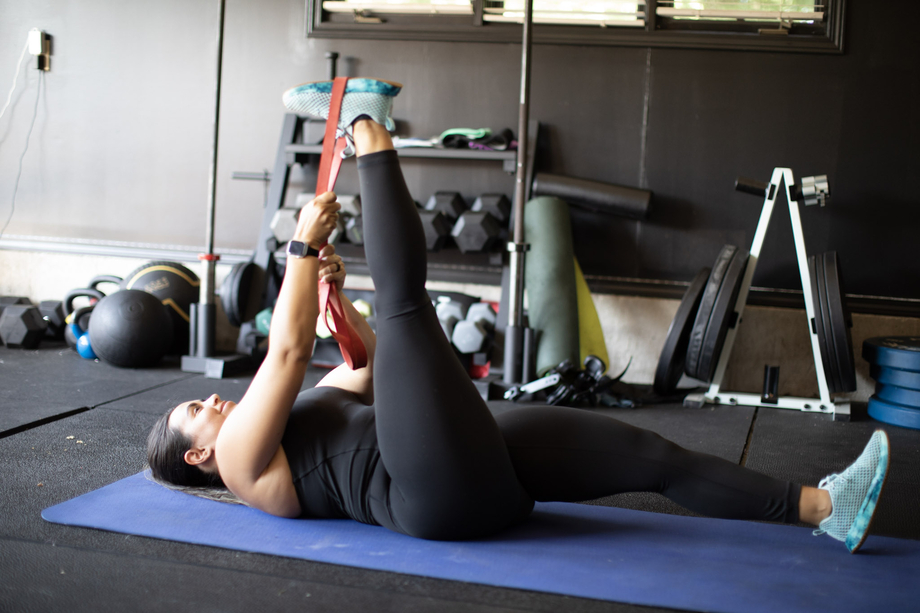
How to do it:
- Lie on your back with your legs extended and your back straight. (Helpful tip: make sure your hips are level and your lower back stays flat on the ground.)
- Bend your left knee, placing your left foot flat on the floor.
- Slowly straighten your right knee, grabbing behind your leg with both hands.
- Gently pull your right leg towards you and hold for 20-30 seconds. (Make sure your hips stay on the floor.)
- Switch legs and repeat on the left side.
You can also do this stretch with a bent knee if keeping your leg straight is too tricky. Using a towel or resistance band around the ankle helps, too.
Why this stretch is awesome:
Your hamstring muscles are primarily used to bend the knees and extend and rotate the hips, all important movements in running form. But did you know the hamstrings play a role in the push-off and swing-through phase of running? Your hamstrings generate force as you push off the ground, and they act like a brake to prevent your knee from hyperextending as the leg swings through to take the next step. Stretching keeps them healthy and ready to get you running faster and more efficiently.
5. IT Band Stretch
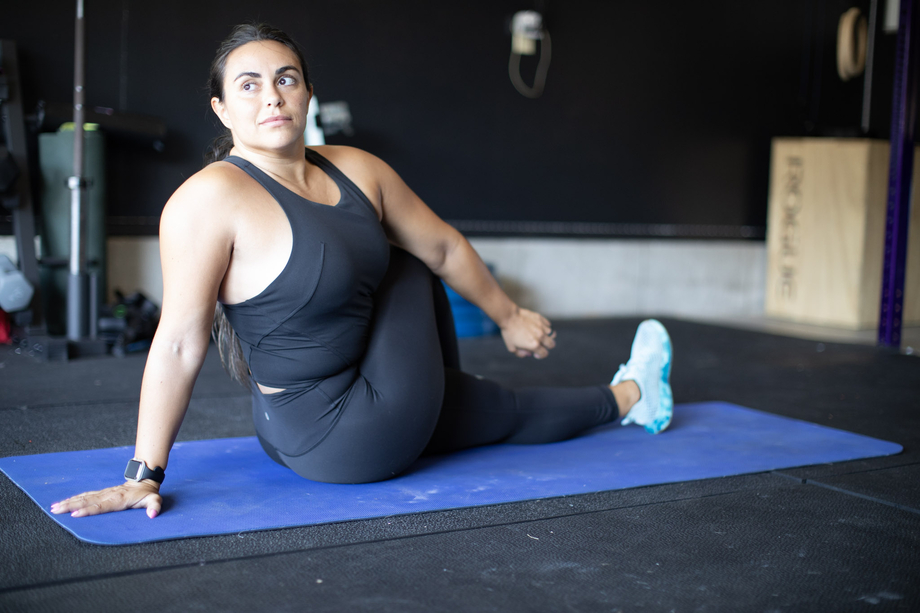
How to do it:
- Stand upright and cross your right leg behind your left leg.
- Lean forward slightly and to your left side.
- Raise your right hand over your head, reach your left side, and hold for 30 seconds. You should feel the stretch on the outside of your right leg.
- Repeat on the other side.
Why this stretch is awesome:
The iliotibial (IT) band sees a lot of action as it extends from your hip to your knee, running alongside your thigh. It’s the largest piece of fascia in the human body and often the source of tightness for many runners. Overuse can lead to IT band syndrome, which can sideline you from your workouts. Targeted stretching of the IT band can help prevent IT band syndrome and relieve any discomfort that may arise.
6. Figure Four
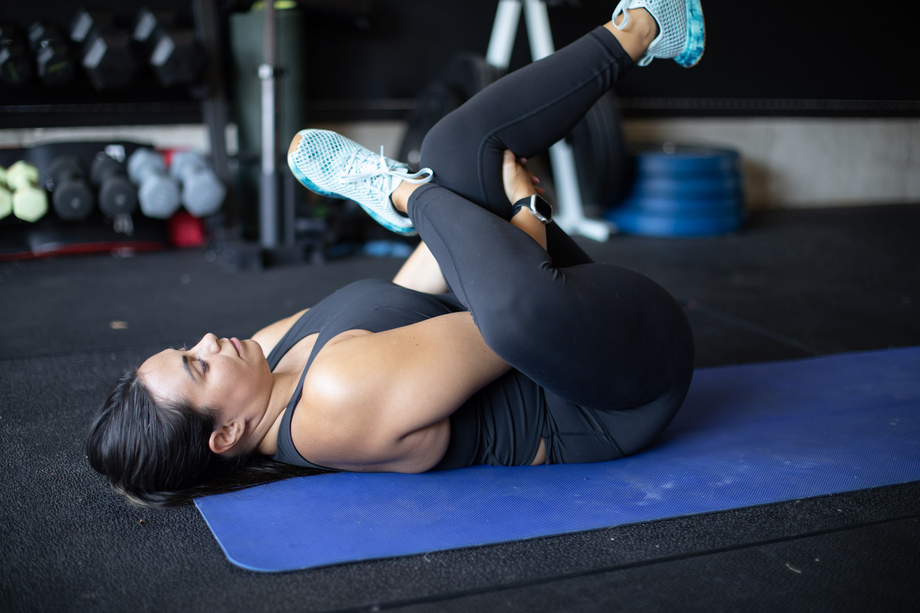
How to do it:
- Lie on your back with both knees bent and both feet flat on the floor.
- Bring your right foot up and place your right ankle just above your left knee. (Helpful hint: keep your right foot flexed.)
- Draw your left knee towards your chest by reaching your right arm through your legs and interlacing your fingers just below the crease of your left knee.
- Using your arms, gently pull your knee to your chest. You should feel a stretch in your right piriformis and glute muscles.
- Hold for 20-30 seconds and release.
- Repeat on the other side.
Why this stretch is awesome:
The figure four stretch is a handy little stretch that helps promote hip mobility and healthy glutes. You can ease tension in your legs, groin, piriformis, and glutes using this one simple stretch.
Stretching Tips
Before you jump into stretching, it’s important to ensure you do it safely. You can stretch anywhere at any time, but proper technique is critical because poor form can do more harm than good.
To keep your stretching routine safe and effective, use these helpful tips:
- Only stretch warm muscles
- Aim for symmetrical flexibility
- Prioritize major muscle groups
- Don’t bounce while holding your stretches
- Hold your stretch for 30 seconds, give or take
- Breathe normally, focusing on the inhale and exhale of each breath
- Stay consistent
- Consider including stretching during your incline or interval workouts
When it comes to pre- and post-run stretches, you might be tempted to focus only on lower-body stretching, but don’t forget about your upper body! Whether running distance mileage or hitting some fast sprints, you’re calling on your lower and upper body to make it happen.
Benefits of Stretching
Whether you’re running or rowing or anything in between, stretching promotes blood flow, which in turn helps to remove lactic acid and waste byproducts of exercise. It encourages muscle recovery and repair, and it may reduce soreness.
Post-run stretches can help improve your flexibility and, as a result, your range of motion. This improved flexibility and range of motion can:
- Decrease your risk of injury
- Improve your physical performance
- Help your muscles work more effectively
- Improve your ability to complete daily activities
Final Thoughts on Post-Run Stretches
Including post-run stretches in your workout routine can benefit your training. Depending on your body’s needs, you may incorporate dynamic stretches during your pre-run routine and static stretches during your post-run cooldown.
This article discussed six good post-run stretches for lower body recovery. Still, it’s important to note that many different variations of stretches can help the same muscles through different mechanisms. Finding what works best for you may take some trial and error.
- Stretching can be beneficial before and after your runs
- Make sure your muscles are warm before you start stretching
- A stretching routine can help improve your range of motion and physical performance while decreasing your risk of injury
- Focus on your breathing pattern to make the most of your stretching time
Post-Run Stretches FAQs
What stretches should you do after a run?
Static stretching exercises are ideal after a run. It elongates the muscle as you hold the stretch for 30 seconds or longer.
Should I stretch post-run?
Stretching post-run is an excellent opportunity to help your body recover. Your muscles are already warm, and a stretching routine can help increase flexibility, performance, and even comfort after a solid run.
How soon after running should you stretch?
Ideally, you want to stretch while your muscles are still warm. After you cross the finish line of your run, take a second to grab some water and spend five to 10 minutes getting in a good stretch. Consider it part of your cool-down.
What happens if you don’t stretch after running?
You may experience muscle tightness, soreness, and cramping if you don’t routinely stretch during your post-workout routine.


